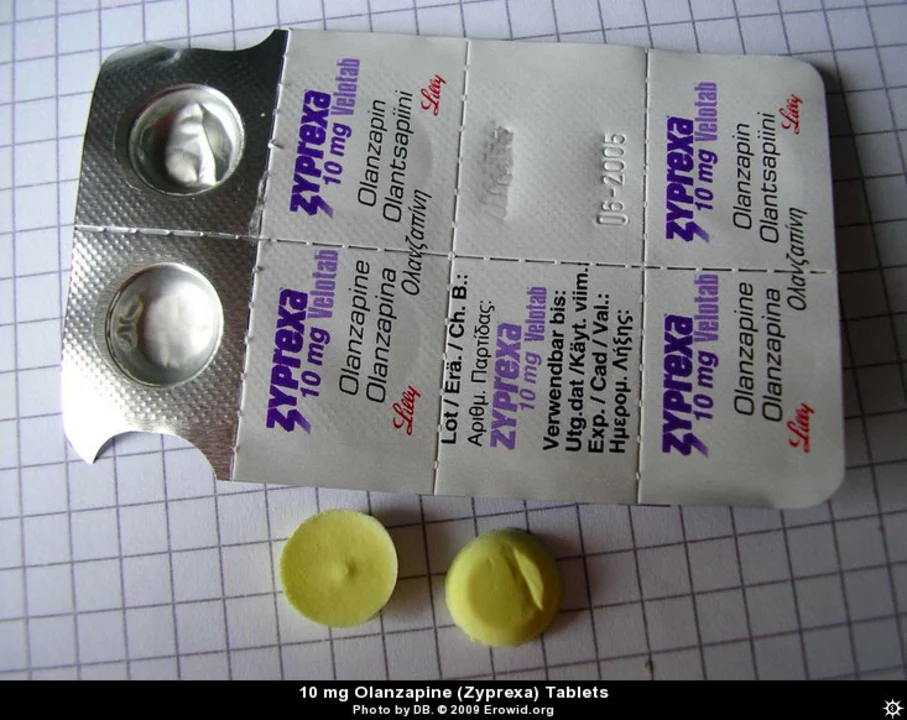Olanzapine: Uses, Doses, Side Effects and Practical Tips
Olanzapine is an antipsychotic used for schizophrenia, bipolar disorder, and sometimes for nausea or agitation. It can calm psychosis, reduce mood swings, and help people sleep when symptoms are severe. Doctors prescribe it when other treatments aren’t enough or when a faster response is needed.
How olanzapine works & common dosing
Olanzapine blocks certain brain receptors, mainly dopamine and serotonin, which helps reduce hallucinations and stabilize mood. Typical starting doses vary: 5–10 mg daily for adults, with gradual changes based on response and side effects. Some people take it once daily at night to reduce daytime drowsiness. High doses over 20 mg are possible but usually avoided due to more side effects. Your clinician will pick the lowest effective dose and adjust over weeks.
Side effects to expect and watch for
Common side effects include drowsiness, increased appetite, weight gain, dry mouth, and constipation. The biggest concerns are metabolic: higher blood sugar, cholesterol changes, and weight gain can raise diabetes and heart risk. Less common but serious effects are movement problems, severe sedation, low blood pressure, or allergic reactions. Watch for sudden changes in mood, severe muscle stiffness, trouble breathing, or high fever — these need urgent care.
Older adults with dementia-related psychosis have higher risk of stroke and death on antipsychotics. If you’re elderly or have heart disease, your doctor will weigh risks carefully. Never stop olanzapine suddenly; withdrawal can worsen symptoms. If switching drugs, your clinician will plan a gradual change.
Interactions matter: avoid heavy alcohol while taking olanzapine because sedation and breathing problems can increase. Tell your prescriber about other meds that affect the heart, blood sugar, or cause drowsiness. If you’re pregnant, planning pregnancy, or breastfeeding, discuss risks and alternatives — some situations need close monitoring or different treatment.
Practical tips: get baseline weight, fasting glucose and lipids before starting, then monitor regularly. Keep a simple log of side effects and sleep patterns to share with your doctor. If cost or access is an issue, ask about generic olanzapine, patient assistance programs, or safe online pharmacy options that require a prescription. Use only licensed pharmacies and verify credentials; avoid sites that ship without a verified prescription.
Want more? Medipond has guides on related meds, safe online pharmacy tips, and how to switch treatments. Bring any questions or a medicine list to appointments, and insist on regular follow-up. With the right monitoring and clear communication, olanzapine can be an effective part of treatment while keeping risks manageable.
Missed dose and storage: If you miss a dose, take it as soon as you remember unless it's near the next dose; don't double up. Store olanzapine at room temperature away from light and moisture. Avoid sharing medication. If you experience sudden weight gain or increased thirst, check blood sugar promptly. Small lifestyle changes help: regular walks, cut down sugary drinks, and routine sleep can reduce metabolic shifts. Discuss vaccines and infection risks with your doctor if immune function is a concern.
Keep questions handy and call your prescriber for any doubts.






